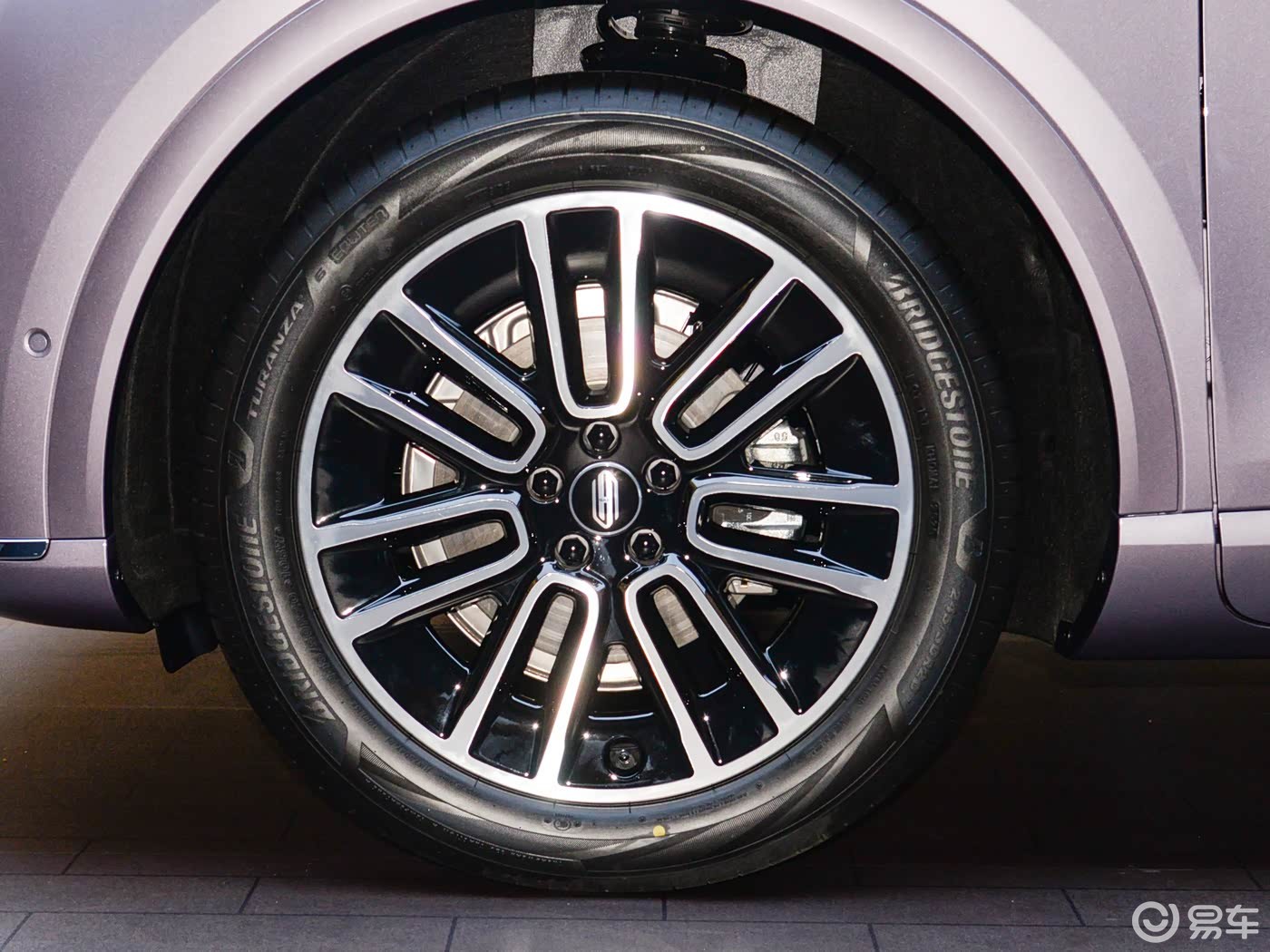Meng Wei, a researcher at China Academy of Social Sciences.
[Abstract] Rice circles are the most authentic way of life for teenagers, showing the characteristics of different cultures based on age factors, so they can be regarded as a contemporary youth subculture. The rice circle culture has formed the self-organizing structure of "love" and exerted the coercive force of limited power, but its group decision-making power, ownership and control power have fallen behind, and the dominant position of entertainment capital has not changed. Therefore, in order to make the rice circle culture enter the mainstream culture, it is necessary not only to have unique discourse expression and behavior style, but also to have the rationality and rules to absorb and shape a wider social group, as well as the resources and ability to achieve common value goals.
[Keywords:] rice circle culture participatory democratic cultural industry
【 Chinese Library Classification Number 】 G124 【 Document Identification Code 】 a
【DOI】10.16619/j.cnki.rmltxsqy.2020.19.007
In recent years, the growth of rice circle culture is impressive — — The original loose spontaneous behavior, formed on social media with the help of capital connection, reconstructs the life of fans in the virtual space parallel to reality, and has achieved a new cultural group. Focusing on rice circle culture, this paper tries to answer the following questions: With the help of social media, what kind of cultural change has rice circle communication brought? What is the relationship between the constantly optimistic rice circle culture and the social, political and economic fields? Does it really show the side of empowering democracy and getting rid of control? What is the value of cultural growth? What impact will it have on teenagers and mainstream society? However, no matter what conclusions are drawn on these issues, an undeniable premise is that these young fans, both boys and girls, push us to think about the changes of the times and the evolution of culture.
What is the "rice circle"? — — The growth track of a subculture
"Culture is a very vague word". [1] The concept of "culture" has always been interpreted from multiple perspectives, but as far as rice circle culture is concerned, the definition given by Raymond Willis sounds more to the point — — "Culture is lifestyle". [2] Rice circles are the most authentic way of life for teenagers. More precisely, they are a self-contained life system formed through social media platforms, represented by symbols and texts, and composed of technology, concepts, behaviors and attitudes. This way of life has its own uniqueness, which can be attributed to "those sub-regions with unique cultural characteristics in a large cultural region". [3] It shows the characteristics of different cultures based on age factors, so it can be regarded as a contemporary youth subculture.
The prototype of rice circles appeared in the 1980s and 1990s. Young people who are obsessed with film and television art, idolize and chase film and television stars like Beijing opera fans are given the title of "groupies" in the new period of reform and opening up. They take the heroes and heroines in the film and television works "Huo Yuanjia" and "Shanghai Beach" as idols and are fascinated by singers such as Steven Liu and Tong Ange. They are the main body of entertainment culture, and also the main consumer of posters, photo stickers, cultural shirts and other products. Fans are mainly students, and their actions are spontaneous, individualized and decentralized, making them the most fashionable and dazzling group.
The cross-century talent show has reset the name of fireworks for fans — — Fans. "fans" is a transliteration of fans, which was originally used to describe those who "enthusiastically participate in ball games, entertainment or business activities, admire and infatuate with movie stars or sports stars", and then extended to "people who have strong interest or appreciation for specific people or things". [5] In 2005, the contestants of Hunan Satellite TV’s Super Girl champion PK entered the public’s field of vision under the high-profile crowd of fans, showing the momentum of the entertainment program. Behind the success of the program, fans contributed a lot. They personally held up the lights and shouted heartily at the scene, cheering for their favorite players with the most authentic attitude. They are active behind the scenes, contacting relatives and friends, and canvassing votes through the Internet and mobile phone text messages. Their fanaticism is shocking. "Super Girl" has led to a number of talent shows for a time. At this stage, the role of the fan team appears, and the fan group will consciously, systematically and systematically plan activities as idol platforms, but most of the activities are confined to offline, and the advantages and disadvantages of its behavior have triggered fierce debates in the mainstream cultural circles, and the view that fans are popular with "vulgar art" [6] is quite dominant.
The fan base is proud of the mainstream culture with a reasonable and legal attitude, thanks to the popularity of the Internet in China for 20 years. In 2014, with the maturity of social media platform technology application, Lu Han and other traffic stars became popular, and "fans received unprecedented attention". [7] In 2018, after the idol-cultivating variety shows such as "Idol Trainee" and "Creation 101" became popular, the fan group had a more affinity name — — Rice rings. The name of fans has changed, and the behavior paradigm has also shown new characteristics. First, the group is more closely linked. Idolize is no longer fighting alone, and there is a new system of star support club, which is responsible for affairs management. Secondly, membership is more behavioral: co-financing, playing the list and anti-triad. Finally, the autonomy of circle group activities is enhanced, and idolize and star-making gradually merge.
Semantically, "rice circle" is a popular collective noun, and "rice" means "fans". "Circle" adds the meaning of group boundary, division and restriction. It can be said that the change of address announced the establishment of an independent cultural circle, showing the ability of fans to build new social relations with the help of the Internet. At the same time, in China’s traditional culture, "Food is the most important thing for the people" has a kind and confident title, which shows the universality, popularization and rationalization of contemporary youth’s subculture behavior trend.
Cultural Cognition of Rice Circles: Similarity and Limitation
Regarding the cognition of fan culture, there are similarities between domestic and foreign studies, mainly focusing on the revelation of antagonism and creativity. John Fiske, a scholar who put forward the concept of fan economy, believes that fan culture is a "shadow culture" and "opposes official culture, strengthens popular culture, and at the same time commandeers and remolds some values and characteristics of official culture". [8] Budic believes that the "otherness" of fan culture is manifested in the misappropriation of mainstream cultural symbols, giving them new meaning in the opposite context and forming a confrontational expression. [9] Michel de Certeau uses "poachers" and "nomads" as metaphors for fan groups, and thinks that fans and text creators have launched a "struggle for text ownership and meaning control", which is a contest between "production power strategy" and "consumption tactics". Henry Jenkins revised Desaido’s theory, arguing that fans create a unique and lasting community culture with a more conscious structure, build an artistic world beyond the control of producers, and their behavior is more productive and creative. [10] Lawrence Grosberg(Lawrence Grossberg) does not agree with the elite view of fans, but also denies that fans are regarded as "people with immature minds and lack of sense of responsibility", and thinks that fans’ enthusiasm and creativity are manifested in "organization rather than chaos, which can produce a kind of ‘ Essential map ’ " Guide people to "join the world". [11]
On the one hand, domestic academic circles pay attention to the explanation and verification of the theories of "entertainment to death", information cocoon room and group loneliness [12], which continuously shows the conservatism of the research; On the other hand, the voice against "stigma" has obviously increased. For example, Yang Ling vehemently refutes that "most elite intellectuals either turn a blind eye to the phenomenon of fans or regard fans as tragic victims of consumer ideology", [13] thinks that fans should be regarded as resistance "‘ Rites collapse and music breaks down ’ The chaos, the spread of cynicism, the erosion of money worship, the indifference and isolation of modern urban life are treated by stubborn idealists. Some studies began to explore the antagonistic-constructive significance behind the fan/rice circle culture, emphasizing the understanding and tolerance of rice circles from the perspectives of field, constructive significance and social intervention. For example, Liu Xun and Zhang Yuxuan believe that fans "actively construct a set of meanings projected by themselves through the Internet", [14] and some studies are more optimistic that rice circles "contain distinctive humanistic spirit characteristics". [15]
Although the expansion of angle and path shows the gradual cognition of fans/rice circles, there are still limitations in excessively focusing on antagonistic and creative meaning exploration. Directly aiming at the research on the cultural issues of rice circles, the argument logic often has a distinct color of binary antagonism, and some conclusions have obvious labeling traces, which have not yet gone out of the argument of either-or views. Restorative rationality, for the investigation of a culture, needs to go deep into its complexity and development, not only tracing back its history of formation and evolution, but also clarifying the changes of its semantics and the connotation of the concepts involved. More importantly, it should be placed in the social macro-context to investigate its position, interdependence and the role of political and economic forces, and then discover its value to the social community, which is the purpose of this study.
Democratic illusion in participatory culture
The most extensive interaction of groups has created the most remarkable feature of rice circle culture — — Participatory. Treating fan activities and participatory culture equally, Jenkins defined the concept earlier: "Fans and other consumers are invited to actively participate in the creation and circulation of new content". [16] He believes that this participatory culture has the following characteristics: First, the low threshold for expressing participation. The second is strong support for creation and sharing. The third is the informal mentoring system. The fourth is to trust the members who make contributions. Fifth, members with certain social connections.
The revelation of participatory cultural characteristics has stimulated the imagination of democracy in academic circles. For example, Don Tapscott and Anthony Williams put forward that consumers can "play an active role" and become "material grassroots users who are meaningful to individuals and society", and their sharing, writing, mixing, using and changing will inevitably lead to the emergence of "new economic democracy … … All of us have taken the lead. " [17] Clay Shirky’s research supports it from the technical theory, arguing that social media can "let people use their free time as a global shared resource and use its advantages to design a new cooperative participation and sharing model". [18]
The view that the participatory culture of fans leads to the natural appearance of democracy is representative but doubtful. A basic problem lies in that it replaces the technical possibility of combining production and use with the inevitability of social change. There is no convincing evidence on how the technological potential can inspire people to actively seek community identity and unity, and then form a new democratic social framework. On the contrary, the obvious fact is that the struggle between different fan groups is escalating. For example, under the "one-sided" public opinion war of stars, social media is more likely to form an atmosphere of prejudice, rather than creating a democratic environment characterized by dialogue and listening.
From the basic conditions of participatory democracy, firstly, participatory democracy emphasizes decision-making participation, which is included in the decision-making process. Second, participatory democracy needs to show equality. Individuals need to have equal intrinsic value, and individual interests should also be considered equally. [19] Third, participatory democracy has development value for the public: enabling them to enjoy freedom, exercise their abilities and implement equality. [20] However, analyzing the meeting of rice circle members in social media, although they can share the content through collective interest, this participation has not yet matched the basic elements of democracy.
Most people in rice circles cannot participate in decision-making, but are excluded from the decision-making process. First, consumers’ identity and organizational structure make them have no right to enter or lack the conditions to enter the decision-making process. The participation of rice circle culture occurs at three levels: production, selection and dissemination, which is mainly realized through the creation of "micro-content". The personalized content production, selection and creative conception of netizens, as well as the interweaving and convergence of opinions in interaction are valuable, but they are unpaid parts. Most members connect the creativity of netizens’ culture through social media and relationship networks, but for them, it is more unconditional to tell the whole story, which has neither economic benefits nor the right to make decisions. At the same time, they have to pay for celebrity meetings and concerts. Second, this kind of participation is attitude rather than willingness and limited participation. On the surface, rice circle members can initiate topics and design actions to promote consensus with their own wishes, but in fact, most rice circle members only express two attitudes towards star idols through identification — — Either support (idols) or oppose (idol competitors), it is not up to them to decide which image the stars will show in the end, and the will of rice circles is mostly suspended in the auxiliary reference level, which constitutes the reality that it is difficult to fully participate in rice circle culture — — The expansion of the number of people and attention has promoted the presentation of cultural diversity, but the barriers to the democratic decision-making of star-making still exist. Third,Ownership is always the core of decision-making, and at this point, most members of the rice circle have no rights at all. They are only involved in the star-making movement through open channels to increase or decrease the flow of stars, while idols are always others who have nothing to do with their rights and interests, and their time, energy and intellectual creation are unconditionally occupied. In this way, participatory democracy stagnates at the symbolic level of cultural expression: as members of the rice circle with creative production capacity and active interaction, what they enjoy is only the illusion of democracy. Its essence is that symbolic democracy and instrumental rationality hit it off, and loyalty and demand are quietly replaced by cultural goods.
Capital, Control and "Dream Stolen" in Cultural Industry
No matter what kind of freedom the participants in the rice circle culture enjoy, a potential fact that cannot be ignored is that they have never got rid of the fetters and control of capital. Not only that, they have injected extraordinary new capital into the cultural industry and made the entertainment industry more profitable.
There is a unique control structure in the spread of rice circles: the top layer is the decision-making layer, which is controlled by the investors who make stars. They open the logic of their cultural operation to rice circles. Below it can be called the promotion layer — — Star support club. Its core figure "Pink Head" is closely related to the management, and some of them are star team members. They will be invited to join the star action planning creativity, discuss the development plan with the management and the star, and therefore, they are often the envy of fans. For fans, Pink Head is a well-informed person, and idolize has rich experience, so he can play a role similar to an opinion leader. On the one hand, they will try their best to convey the employers’ intentions to the members of the rice circle through the support meeting, design and guide the action direction for the fans, and determine the prescribed actions; On the other hand, the fans’ opinions will be absorbed by the fans, and they can also be passed on or integrated into the star development blueprint. There are a series of departments at the promotion level as operating institutions, which can be regarded as a bridge connecting employers, stars and rice circle members, and then become an obvious control force of rice circle culture. At the basic level are rice circle members, who participate in activities for emotional, interest, realization and other purposes, providing attention, creating events, contributing to the flow, and expanding the team, as well as iron powder (people who always love and resolutely support idols regardless of their success or failure) and fan powder (only like a member under the premise of understanding the basic situation of the group to which he belongs and its members — — Fans who love beans), CP powder(I am crazy about being a fan of a couple in variety entertainment and other programs), black powder (people who oppose a star, maliciously discredit or provoke the relationship between a star and fans), etc. As far as individuals are concerned, some members are simple and some hold cross-identities. Some members will apply to join support clubs or form support branches to accomplish common tasks. There is also a platform layer around the rice circle, such as Weibo, QQ Group, Baidu Post Bar, Douban Community, etc., which is the activity field of rice circle members and a source of parallel control. In this way, the spread of rice circles has formed a strict system, and its closed cycle maintains the firmness of capital control: capital control opinion leaders (referring to the powder head/core layer), opinion leaders control support clubs, rice circle members/branches control media events, media events control social platforms/algorithms/traffic platforms/algorithms/traffic control social public attention, and at the same time, they have the ability to pay attention to stars and companies, opinion leaders and support clubs, support stations and rice circles.

Further analysis, the star company is a powerful capital manipulator, which can intuitively display the commercial value of the star, and will "do everything possible to encourage fans and strive for maximum benefits". [21] For example, they will set up a special statistical agency to launch statistical coordinates showing star rankings at a fixed time to "spur" fans to hit the list. They will establish a monitoring system of star flow and its realization, measure the value of stars and seize business opportunities. For companies, star appeal and fans’ purchasing power based on popularity, traffic and data are the most important sources of capital benefits.
The outer social platform is also the main beneficiary of economic benefits. For example, in recent years, Sina Weibo has launched the celebrity power list, Chaohua and other applications to benefit a lot from the rice circle. In 2019, Weibo’s value-added service revenue in the first quarter reached US$ 58 million, an increase of 24% over the same period of last year. [22] The platform has the online behavior and personal information data of users, technical manipulation means such as algorithms, and also controls the hidden power to support or close users and channels.
"You and I didn’t have a chance, but I spent all my money." For the members of the rice circle, spending money is a necessary option to express their love and loyalty to idols, which constitutes a new source of star capital. In 2018, when a player participated in the "Idol Trainee" program, he voted to raise more than 2 million yuan. It is reported that fans spent more than 10 million yuan to buy virtual flowers to keep him in the first place. In 2019, the income of the power list alone exceeded 100 million yuan. [23]
Through the circulation of the system, the capital control of rice circle has produced such uniqueness: First, economic interests and cultural interests have been closely exchanged, and idols and fans have formed an asymmetric interest community. On the surface, fans’ interest has incorporated entertainment stars and products, and capital serves the cultural interests of rice circles. In fact, the entertainment industry has never relaxed its anti-incorporation, and they have become the ideal "dream thieves" of rice circle culture, and can grasp the direction of capital through fan interaction. At the same time, the reward of rice circle has become a key part of star capital, so the exchange of economic interests and cultural interests is asymmetric. Second, the biggest winner is the entertainment industry dominated by the management. Commercial capital has a strong influence through the support of traffic data, and rice circles spare no effort to present their dream orientation and provide consumer protection. The paradox of contemporary youth subculture control is thus formed — — The rice circle group may affect the idol’s advance and retreat by adding new capital, but as far as individuals are concerned, the control power is not only irrelevant to them, but makes them more deeply trapped by commercial capital, makes idolize’s behavior more insane, and even leads to new problems such as violent conflicts due to excessive addiction.
Structural Function and Power Operation: Self-organization as "Love"
It can be said that the hierarchy of the rice circle system is distinct, the capital control is strong and hidden, and a self-organizing structure with rich characteristics and strong operation is formed (as shown in Figure 2)— — According to the rules of tacit understanding, the members of the rice circle do their part to coordinate their actions and automatically play their functional roles, thus jointly enhancing the influence of the rice circle culture. The self-organization of rice circle is mainly composed of three parts: core layer (powder head), management layer (subsystem) and basic layer (rice circle). From the core "powder head" to the management, to the branches and ordinary fans, the self-organization includes several subsystems and sub-subsystems, and the members of the support club subsystem bear different responsibilities: it can be subdivided into art group, copywriting group, data group, publicity group, anti-gang group, financial group, etc., to ensure the mutual cooperation of technology, planning, publicity and communication functions. The support club subsystem controls the members of the rice circle by joining the club, and some members have consciously established sub-systems in different regions at home and abroad — — Support branch organizations, and branches can differentiate into smaller organizations such as aid stations at a lower level in different activities. This ensures the smooth communication of information in a wide area or even in a global scope. Not only that, the self-organization of rice circle also has the high efficiency of feedback system, and its internal information flows openly. All support clubs and support stations will open social media accounts and publish information at any time for members to supervise and give feedback. The complexity and orderliness of the structure and function make the rice circle run effectively.

The characteristics of self-organization of rice circles are: first, the goal is clear, that is, the system, subsystem and branches work together to help idols. Second, rice circles have organizational rules, which are manifested in two levels: explicit rules and hidden rules. For example, the "Sheep Village Fans Convention" requires that "the fans who pick up and drop off the plane should not be noisy, crowded, pushing and other behaviors that affect public order" and "Please control your emotions when helping your idol, and don’t hurt others because you are too excited", etc. [24] This is an obvious rule shared by the "Sheep Village" rice circle around the world. However, the awareness of star protection, reward and anti-gang behavior constitute the hidden rules of the leading group. If this principle is not followed, it will be difficult for new powder to enter the circle, and old powder will be rejected. In this way, even if there is an accident in which "powder head" runs away with money, the members of the rice circle still respond with a "tolerant" attitude, and their enthusiasm for contributing money and rewarding has not wavered. Third, special language symbols — — Pinyin abbreviations constitute the cultural identity symbol of rice circles. For example, dbq stands for sorry, pyq stands for circle of friends, and zqsg means true feelings, etc. If you don’t understand these terms, you can’t take the "He Z generation" (referring to people born between 1995 and 2009 and deeply influenced by the Internet, instant messaging, smartphones and tablets — — Author’s note)The first step of happy communication. " [25]
Power relationship is the key to understand the self-organization of rice circles. Intellectuals’ cognition of power mainly includes two dimensions. One is Max Weber’s view of power. Max Weber defines power as "the ability to asymmetrically influence other actors’ decision-making ability in a way that is conducive to strengthening the actors’ own will, interests and values" and "the opportunity to realize their own will when they encounter opposition from others who participate in the action in social action". [26] The second is power from the perspective of Anthony Giddens’ social structure theory, that is, power is "the ability to change" — — The ability to intervene in an event so as to change it in some way. [27] Max Weber’s understanding of power emphasizes the relationship between compulsion, domination and asymmetry, [28] Giddens tends to understand the power generated by change from the social system with symmetrical distribution of power.
From the semantic point of view, Giddens’ power connotation seems to be more able to show the power of the Internet community. In Manuel Castells’ research, the power of network society is further divided into four types: access right, normative right, internal control right and network construction right. [29] However, for social groups like Fanquan, it seems too rough to simply divide them according to this, because the determination of these four powers is still limited to the scope of the impact of technological changes, and it is impossible to fully demonstrate the freedom and strength of action of subculture communities based on self-awareness and goal strategies. In parallel with technical empowerment, the cultural power controlled by the rice circle organization is bidirectional: on the one hand, the power is manifested internally as mandatory and dominant rules; On the other hand, power manifests itself as the antagonism of cultural consciousness. No matter which direction you point, the coercive power comes from "love". Because of the value of guarding love, fans can spread out large-scale alliance formations; Because of the persistence of love, self-organization may show antagonistic impulse in generate; Because there is no doubt about love, the originally calm social circle may ignite a "flame war" in an instant. [30]
According to Abraham Harold Maslow’s hierarchy of needs theory, people have physiological, safety, love and respect needs, and self-realization is at the highest level of needs. [31] Rice circles project the feelings of love on idols, because idols satisfy their various demands — — Such as understanding, love and respect. Love idols represents their affirmation of the value of youth: love beauty, fun and inspiration. Loving idols fills the gap in their desire for their dream partner. Love idols also convey their desire to achieve their goals and realize themselves. The theory of "narcissistic self-reflection" can open a skylight of understanding by deeply exploring the motive force of this kind of love. Historian Christopher Lasch pointed out that consumerism gave birth to narcissistic culture, and its important support was the media and fans. Cornel Sandvoss further believes that under the narcissistic psychology, fans will have a "narcissistic self-mapping" on the object. By looking for common ground, they will project their physical characteristics, experiences and value beliefs on the object, and the object will thus become an extension of themselves. On the one hand, consumption provides an important symbolic resource for the formation of self-identity; On the other hand, consumption integrates itself into the order dominated by economy, society and culture. [32]
Not only that, members of subculture can identify each other, learn from each other and complement each other by means of organization and borrowing algorithm technology, and can quickly produce effective self-guidance and realize the strength of self-class groups. In this way, the social self is full of fun — — It not only has the ability to influence others’ behavior and create events, but also can make members get rid of loneliness and powerlessness as individuals. As a result, the self-organization of "love" has achieved the dream of youth, encouraging cultural individuals to pounce on rice circles like moths.
Conclusion: a highlight moment of subculture
All of the above shows that although the rice circle culture influences the social life of teenagers with the increasing number and influence of people, it has always been creeping on the edge of the mainstream culture, and has not changed the sub-cultural background of the pioneers advertised by fans: the rice circle culture has gone through the process from offline to online, from individuals to groups, from individual behavior choice to platform event operation, but it has not escaped the state of symbolic democratic participation; This culture has formed a strict self-organizing structure of "love" and exerted the coercive force of limited power, but its internal decision-making power, ownership and control power are still sidelined, and the dominant position of entertainment capital has not changed.
然而,即便如此,近年来另一种现象还是格外引人注目。2019年8月,一个喧嚷香港独立、抹黑中国的海外论坛,在不到一天的时间里被饭圈女孩刷了5万多个回击帖,饭圈女孩联盟为共同的爱豆“阿中”(即中国)打响了舆论保卫战。在Twitter、Facebook、Instagram等社交平台上,她们列数据、做动漫、写文案、上视频,摆事实讲道理,分工合作表达爱国立场,为当代青年亚文化群体的价值观表达积累了独特的文化经验。
多方联动形成合力,饭圈也成为参与社会行动的一支重要力量。2020年新冠肺炎疫情期间,不少饭圈组织及个人自发捐款捐物,在公益领域发挥作用。“FUNJI粉丝团抗疫公益行动记录”数据显示,截至2020年2月29日,饭圈为疫情捐款超800万元,捐口罩超100万只,还捐助其他医用物资及生理用品。[33]在共同完成一件件大事的过程中,饭圈成员“获得了集体组织的安全感和力量感,也从中获得了日常生活难以企及的使命感和崇高感”。[34]
Participating in the efficient operation of social governance action shows the reality of rational development of rice circle culture from one side, which inspires us to make the following expectations — — If a subculture not only has its unique discourse expression and behavior style, but also has the rationality and rules to absorb and shape a wider range of social groups, as well as the resources and ability to achieve common value goals, then it will no longer be "the residue of grabbing and borrowing from popular culture", [35] and it will really have the strength to build social life, and then it will inevitably usher in the highlight moment of entering the mainstream culture.
annotate
[1] [Germany] Wolfgang Fritz Haug: Cultural Differences, translated by Yang Junjie, Zhengzhou: Henan University Press, 2017, p. 1.
[2] Liu Jilin: The Significance of Raymond Henry Williams’s Cultural Theory and "Key Words" Research to China, Journal of Wuhan University of Science and Technology (Social Science Edition), No.4, 2011.
[3]Gordon, M., "The Concept of the Subculture and Its Application", Social Forces, 1947(1).
[4] See [America] Henry Jenkins: Text poachers, translated by Zheng Xiqing, Peking University Publishing House, 2016.
[5]Price, L.; Robinson L., "’Being in a Knowledge Space’: Information Behaviour of Cult Media Fan Communities", Journal of Information Science, 2016(7).
[6] See Quotations of Liu Zhongde’s Criticism of Super Girls, Sina. com, http://ent.sina.com.cn, updated on May 3, 2006; Criticism of Super Girl Fans’ Idol Complex Baidu Post Bar, https://tieba.baidu.com/p/125448192?. Red_tag=1965194535, updated on August 20th, 2006.
[7] Hu Cencen: From "groupies" to "rice circles", China Youth Studies, No.2, 2020.
[8]Fiske, J., The Cultural Economy of Fandom, The Adoring Audience: Fan Culture and Popular Media, London: Routledge, 1992, pp. 30-49.
[9]Hebdige, D., "Subculture: The Meaning of Style", Critical Quarterly, 1995(6)
[10]Jenkins, H., Textual Poachers: Television Fans and Participatory Culture, New York: Routledge, 1992, p. 45.
[11] [America] Lawrence Grosberg: "Are there any fans in this room? — — Emotional Perception of Fandu, edited by Tao Dongfeng: A Reader of Fan Culture, Peking University Publishing House, 2009, pp. 134-136.
[12] Xu Tian: "The Harm of Sub-culture Phenomenon in Rice Circles in China and Its Guiding Path", "New Media Research", No.8, 2020.
[13] Yang Ling: A Study of Fan Culture from the Perspective of Western Consumption Theory, Changjiang Academic, No.1, 2011.
[14] Liu Xun and Zhang Yuxuan: Self-construction and Functional Value Analysis of Domestic Rice Circles, Sichuan Drama, No.3, 2020.
[15] Yuan Zhixiang: "The Construction of Youth’s Subjective Consciousness under the Culture of Rice Circles", People’s Forum, mid-May 2020.
[16]Jenkins, H., Convergence Culture, New York University Press, 2008, p. 331.
[17]Tapscott, D.; Williams, A., Wikinomics: How Mass Collaboration Changes Everything, New York: Penguin, 2007, p. 15.
[18]Shirky, C., Cognitive Surplus: How Technology Makes Consumers into Collaborators, London: Penguin, 2011, p. 27.
[19] [America] Robert A. Dahl: On Political Equality, translated by Xie Yue, Shanghai People’s Publishing House, 2010, p. 3.
[20] See [English] David Held: The Model of Democracy, translated by Yan Jirong, Beijing: Central Compilation and Publishing House, 2008.
[21] Qiu Yujuan: Fanquan Culture: Fan Culture 2.0 from the Perspective of Communication, Satellite TV and Broadband Multimedia, No.8, 2020.
[22] Weibo Releases Financial Report for the First Quarter of 2019, Sina Game, http://games.sina.com.cn/y/n/2019-05-23/hvhiews4076886.shtml, May 23, 2019.
[23][25] Sun Yifei: "KPI of rice circles in the era of traffic", "New Financial Watch", July 29, 2019.
[24] Sheep Village Fans Convention, Hupu. com, https://bbs.hupu.com/36035612.html, June 17, 2020.
[26]Weber, M., Economy and Society, Berkeley, CA: University of California Press, 1978, p. 926.
[27]Giddens, A., The Nation-State and Violence, Cambridge: Polity Press, 1985, p. 7.
[28]Habermas, J., Theory of communication, Boston, MA: Beacon Press, 1987.
[29]Manuel Castells, Communication Power, Oxford University Press, 2009, pp. 43-47.
[30][31] Meng Wei: "Network Interaction — — Interpretation of Meaning and Discussion of Rules, Beijing: Economic Management Press, 2004, pp. 147 and 156.
[32]Sandvoss, C., Fans: The Mirror of Consumption, Cambridge: Polity Press, 2005, pp. 95-109, pp. 113-114, pp. 154-165.
[33] "When Girls in Rice Circles Rush to the Anti-epidemic Field", 澎湃 Network, https://www.thepaper.cn/newsDetail_forward_6646110, March 23, 2020.
[34] Chen Liqin: Action Logic of "Evolution" and Construction of "Common Meaning" of Girls in Rice Circles, Journal of Shenzhen University (Humanities and Social Sciences Edition), No.3, 2020.
[35] [America] Henry Jenkins: Popular Culture: Fans, poachers and nomads — — Desaidu’s Popular Cultural Aesthetics, Journal of Hubei University (Philosophy and Social Sciences Edition), No.4, 2008.
Meng Wei, researcher of China Academy of Social Sciences, director and professor of Network Science Research Office of Institute of Journalism and Communication. The research direction is network new media and its social influence, public opinion, media ethics, literacy and media integration. His main works are Network Interaction: Meaning Interpretation and Rules Discussion, Moral Arguments of Media Ethics, Communication Practice and Thinking, etc.
Editor/Xiao Han’s question

















